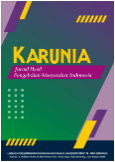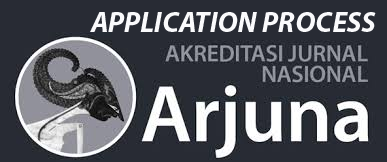Penyuluhan Teknik Deep Cleaning Sepatu Secara Mandiri Untuk Pemeliharaan Kualitas dan Keawetan Sepatu Kepada Para Pemuda Karang Taruna Desa Mojowiryo Kecamatan Kemlagi Kabupaten Mojokerto
DOI:
https://doi.org/10.58192/karunia.v4i1.3043Keywords:
Shoes, Take care, CleanAbstract
Community Service Lecture (KKN) is a program held by the campus to serve the community by students with the aim of helping the local community to solve problems in the village. The socialization activities were carried out in Mojowiryo village, Kemlagi sub-district. The activity aims to foster a sense of enthusiasm for cleaning small things, especially taking care of shoes. This socialization is also intended for young people to open business opportunities to reduce unemployment in the village with a shoe laundry business. In the implementation of these activities carried out by means of questions and answers and presentations by the KKN team. The results obtained from these activities are that the community can find out how to take care of their shoes properly and correctly with makeshift tools to make a profitable business field.
References
Agustin, A., Putra, G. P. E., Pramesti, D. T., & Madiistriyatno, H. (2023). Strategi UMKM dalam menghadapi digitalisasi. Oikos-Nomos: Jurnal Kajian Ekonomi dan Bisnis, 16, 33.
Aliyah, A. H. (2022). Peran usaha mikro kecil dan menengah (UMKM) untuk meningkatkan kesejahteraan masyarakat. Welfare Jurnal Ilmu Ekonomi, 3(1), 64–72. https://doi.org/10.37058/wlfr.v3i1.4719
Hilmiana, H., & Kirana, D. H. (2021). Peningkatan kesejahteraan UMKM melalui strategi digital marketing. Kumawula: Jurnal Pengabdian Kepada Masyarakat, 4(1), 124. https://doi.org/10.24198/kumawula.v4i1.32388
Permana, S. H. (2017). Strategi peningkatan usaha mikro, kecil, dan menengah (UMKM) di Indonesia. Aspirasi: Jurnal Masalah-Masalah Sosial, 8(1), 93–103. https://doi.org/10.46807/aspirasi.v8i1.1257
Wicaksono, D., Baga, L. M., & Novianti, T. (2021). Formulasi strategi unit bisnis laundry sepatu (studi kasus Darmawan Wash Shoe Bogor). Jurnal Aplikasi Bisnis Dan Manajemen, 7(2), 356–365. https://doi.org/10.17358/jabm.7.2.356







